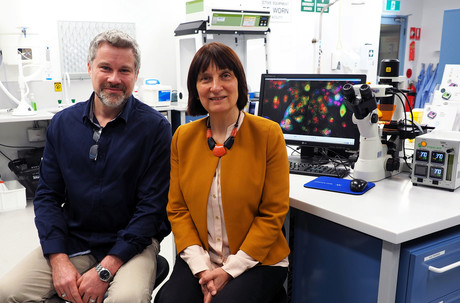Automated image analysis to aid bladder cancer diagnosis

Australian researchers have developed an automated computer technique that is able to aid in the diagnosis of bladder cancer, allowing suspect lesion images to be quickly and effectively analysed and then classified for cancer risk.
Dr Martin Gosnell, a researcher at the ARC Centre of Excellence for Nanoscale BioPhotonics (CNBP) at Macquarie University and lead author of the study, explained that cystoscopy is theoretically one of the most reliable methods for diagnosing bladder cancer, with the bladder and its insides imaged for suspicious lesions.
“Dependent on the findings, this initial scan can then be followed up by a referral to a more experienced urologist, and a biopsy of the suspicious tissue can be undertaken.”
The issue, Dr Gosnell said, is that the clinician examining the initial images makes a visual judgement based on their professional expertise as to the next steps of action that should be undertaken — such as the need to take a biopsy for subsequent pathological analysis.
“Potential errors and unnecessary further interventions may result from the subjective character of this initial visual assessment,” Dr Gosnell said. “What we’ve done is to create an automated image analysis technique which can identify tissue and lesions as either high risk or minimal risk.
“Following the analysis, high-risk diagnoses can be followed up more closely as a matter of urgent priority. Alternately, minimal-risk lesions can be identified early in the diagnostic process, reducing the number of referrals or biopsies that need to take place.”
Professor Ewa Goldys, deputy director of the CNBP and senior author of the paper, said the lesion classification system was developed using a specialised colour segmentation process.
“Firstly, cytoscopy images which were taken during routine clinical patient evaluations and supported by biopsy were interpreted by an expert clinician. They were classified as either healthy, veined tissue, inflammation or cancerous,” she said. “This visual assessment was based on aspects such as colour, surface, shape and size of the lesion or tissue of interest.
“Our task was to then devise a computerised method that could mimic this expert diagnostic capability. We did this by developing an automated imaging program that was able to analyse the specific colour, luminance and texture of each piece of tissue that was being examined, right down to a pixel level.
“This provided a clear-cut classification system — the presence or non-presence of specific characteristics in the image aligning with the healthy or cancerous nature of the tissue being examined.”
Writing in the journal Urologic Oncology, the researchers revealed that 100% of the cancerous images analysed in their study were detected. All benign lesions were also successfully identified.
Professor Goldys believes the automated diagnostic system could effectively assist doctors and nurses in their assessment of cystoscopy imagery, particularly those who have less experience.
“This additional analysis also has the potential to reduce the number of patients being given erroneous assessments or unnecessary bladder biopsies, offering increased efficiencies and effectiveness in cancer clinics,” she said.
Digital twin of the heart helps detect cardiac arrhythmias
A new non-invasive method can locate the origin of premature ventricular contractions (PVC)...
GenAI tool can speed up scientific discovery
The new AI system is an interactive LLM tool which can retrieve useful information from...
AI trained to diagnose lung diseases
The AI model works by examining each video frame to find important features of the lungs and...




